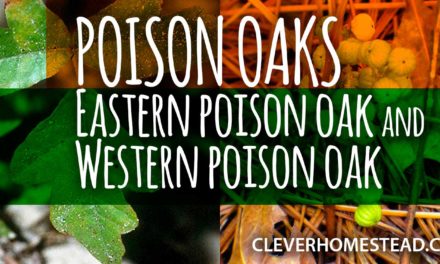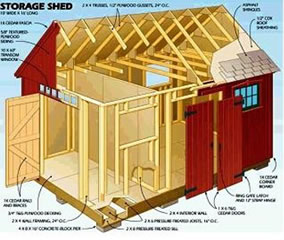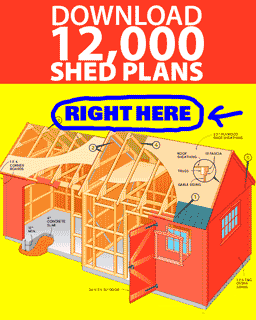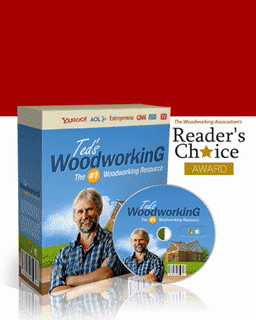Content of this page
Urushiol Reaction
Allergic people
In North America, it is estimated that 80% of the population is sensitive to poison ivy (eastern and western) and its cousins plants (poison sumac, eastern and western poison oaks). The degree of sensitivity can vary significantly over the life of a person and from one person to another. For example, children are often more sensitive than adults and people with thicker skin and strong hair have less severe reactions. The American Academy of Dermatology estimates there are up to 50 million cases of urushiol-induced dermatitis annually in the United States, accounting for 10% of all lost-time injuries in the United States Forest Service.
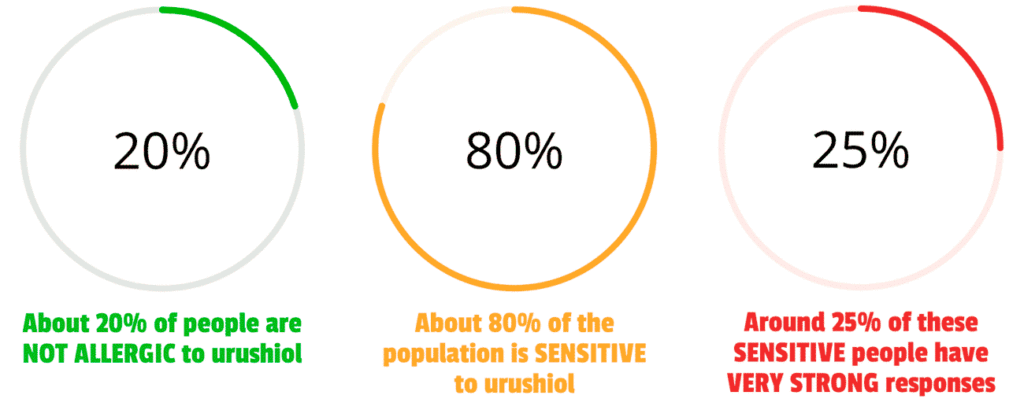
Non allergic people? (the lucky ones)
Because urushiol is contained in a varnish widely used in Asia, obviously Asian people are not worried about this allergy. People of these regions are exposed to urushiol since centuries and millennia, so their bodies are accustomed to this substance. Indians of America, that originate from Asia, are also not allergic to urushiol. White people of North America are exposed to urushiol since 1 to 3 centuries. Apparently, it’s not long enough. The miscegenation can increase or decrease the allergic reaction of person to urushiol.
About 20% of the people in North America are not allergic to urushiol, but there’s no guarantee one person won’t become sensitive. People can develop the allergy after exposure to the plants. Repeated exposures to urushiol can make a person more and more sensitive. So a person living in city since birth and moving to countryside can develop this allergy slowly, being exposed repeatedly to poison ivies or poison oaks.
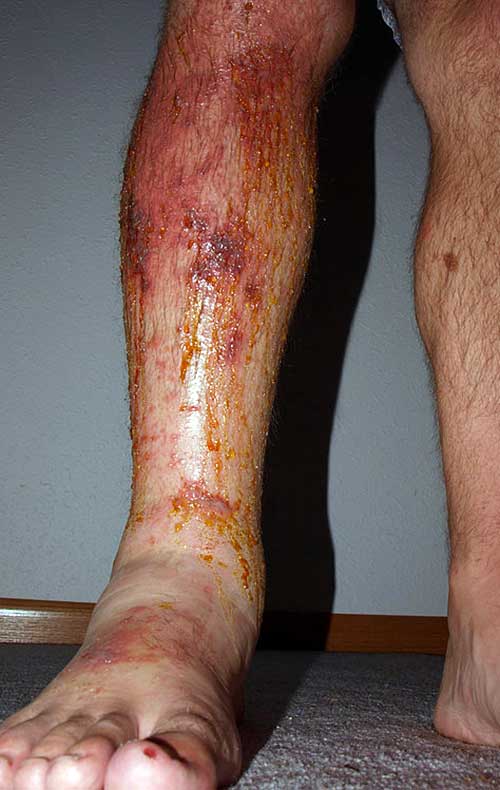
Allergic reaction
The toxic effects of urushiol are induced by an immune response. Urushiol acts as a hapten, and is combined with proteins on exposed skin cells and elicit the production of antibodies that bind specifically to it. Affected proteins interfere with the immune system’s ability to recognize these cells as normal parts of the body. This immune response is directed towards the urushiol derivatives (pentadecacatechol) bound in the skin proteins, attacking the cells as if they were foreign bodies.
Urushiol
The irritant element in poison ivy is urushiol, which is present in the sap of this plant. The name urushiol comes from the Japanese word urushi, which is a varnish made from the sap of a tree. Thus, all parts of the poison ivy are poisonous to the touch: leaves, stems, roots and fruits. Urushiol is a powerful allergen which penetrates the skin cells in less than 5 minutes. It is a stable compound that does not evaporate and its toxicity may persist for several months on dead plants and objects that have been contaminated.
Various contacts with urushiol
The sap, contained within the plant, is released when the plant is damaged. The leaves are more fragile, and more likely to poison us. In this sense, a skin contact with an intact plant will produce no reaction.
Animals do not react to urushiol but a sensitive person will be poisoned if it is in contact with an animal that moved in poison ivy. This is an indirect contact. Urushiol can also reach us by air if the plants are burned in a fire or crushed and thrown by a lawnmower or trimmer. Personally, when I stopped mowing the lawn, my reactions to poison ivy fell significantly.
Videos about urushiol
Resources about urushiol
Is poison ivy contagious?
Poison ivy reactions are not contagious
Be reassured, the poison ivy dermatitis is not contagious through casual wound contact or blister’s liquid contact between body parts or two people. Rashes are spread only by contact with the sap (urushiol) of the plant. However, dermatitis can be spread by scratching because the urushiol remains under fingernails for several days if cleaning with soap is not done carefully.
You may have noticed that the poison ivy rashes doesn’t appear in the same time. Where the skin was seriously in contact with the plant, the rash and blisters appear since the second day after the contact. Where the skin was slightly in contact with the plant, the reactions appear days later. We can thus believe that there is a contagion by the wounds when there is simply a shift in the triggering of the reactions.
There is a confusion between the sap remaining on skin (objects, clothes, boots, shoes and tools) [what we can’t see] and the oozing blisters [what we can see]. So pay attention to wash the dirty clothes and trash the contaminated work gloves. It’s a recurring mistake I do that makes me suffer more often than I should.
Poison ivy, poison oak and poison sumac Treatment
The rash
We all know what happens next, so I’ll be brief. Poison ivy symptoms are obvious. The urushiol of the plant causes painful irritation of the skin, in short, a violent dermatitis. The following symptoms appear within 24 to 48 hours after contact with the plant sap: itching, redness, blisters, and in more severe cases, oozing sores. The blisters may burst and become inflamed lesions that ooze, then slowly dry up and heal. Symptoms usually disappear within one to two weeks, depending on the level of poisoning of the skin.
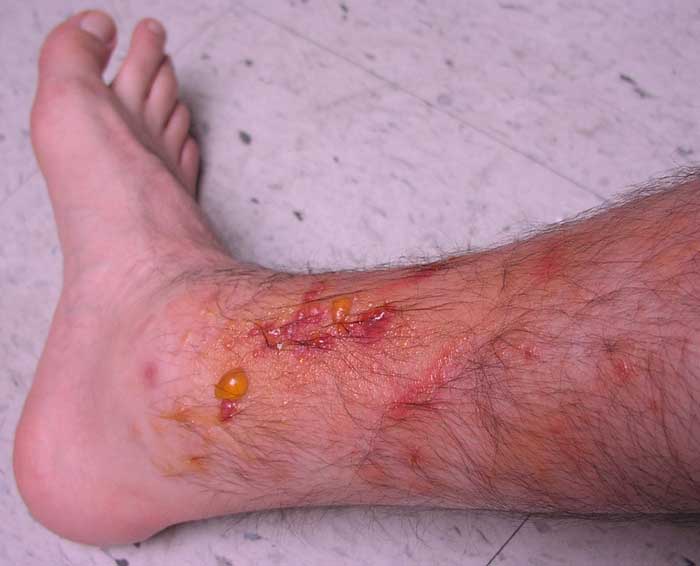
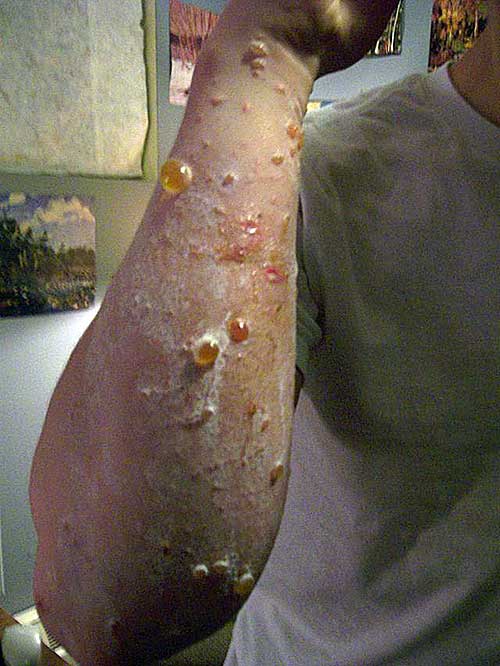
Washing
As soon as you think you have been in contact with the sap of poison ivy, wash carefully with soap and cold water. This must be done quickly because the urushiol penetrates the skin in less than 5 minutes. Avoid hot water because it opens the pores of the skin and allows the resin to penetrate deeper into the skin. Washing with soap prevents the spread of poison to uncontaminated parts of the body. You can replace the soap by vinegar or alcohol. Wash clothing and contaminated objects several times with warm soapy water. Pets that have been contaminated must be washed with water and soap.
TECNU Extreme Medicated Poison Ivy Scrub
Tecnu Extreme is a medicated poison ivy scrub that removes the rash-causing urushiol oil to keep it from spreading and also treats the painful, itchy inflamed rash. Temporarily relieves burning, itching and pain due to poison ivy; poison oak; poison sumac.
To Treat Rash: Squeeze desired amount of product into hand. Wet affected area with cool water apply to affected skin and surrounding areas. Gently rub for 15 seconds; avoid breaking the skin. Rinse with cool running water and towel dry gently. Repeat as needed.
To Remove Urushiol Oil: Squeeze the desired amount into hand. Wet skin completely with cool water. Apply to exposed areas and gently rub for 15 seconds; if hypersensitive, wash entire body with Tecnu Extreme. Rinse with cool running water and towel dry.
- Medicated anti-itch outdoor skin cleansing scrub. Fast cooling itch and pain relief
- Stops itching & pain, dries oozing, promotes healing
- Removes the Urushiol oils from rash to speed & promote healing
- Stops the spread of rashes and infections by removing the urushiol oils from poison ivy and oak and speeding healing
Zanfel wash treatment
The Zanfel poison oak, ivy, and sumac (urishiol) topical wash treatment comes in a one-ounce tube, provides relief of pain and itching within 30 seconds and can be used on external body areas including the face and genitals. A wash treatment is a topical substance that provides physical relief to campers, landscapers, forestry workers, and firefighters, for itches and rashes caused by plants. This wash treatment can be used in conjunction with steroid treatments. Zanfel cream binds with urushiol, allowing it to be removed from the body with washing and water. Zanfel can be used to clean garden utensils and other instruments that have plant substances on them. It has a 10-year shelf life.
Poison Ivy Soap
After exposure to poison ivy, use the Poison Ivy Soap exclusively under shower. Wash your entire body with Poison Ivy Soap; do not use any other soap or body wash at this time as the ingredients may spread the urushoil or irritate any rash. Rinse well. The Poison Ivy Soap is not a prewash; it is for use after exposure to urushiol. Poison Ivy Soap removes the Urushiol (the invisible oil from the plants) thus preventing the rash and/or removing the itch. Wash after exposure, or after rash occurs. Product Contains: Saponified Animal Oils, Jewelweed & Spring Water Poison Ivy Soap is the perfect combination of pure soap made with animal oil, spring water, and the herb “jewelweed”. Animal oil will not spread the invisible urushoil, or sap of the poison ivy and oak plants. Jewelweed is a natural antidote that washes away the urushoil completely and dries up any existing rash or blisters.
Compresses
To calm the itching, compresses are a simple and affordable treatment. Apply for 15 to 30 minutes. Compresses can be composed of water or half water and half milk, with ice, applied twice daily for 2 or 3 days. Compresses from baking soda or aluminum acetate powder such as Burosol can also be used.
Warm baths
If the allergic reaction extends over several parts of the body, warm baths may also relieve itching. Add one of the following to your bath water: 1 cup (250 ml) baking soda; 1 cup (250 ml) of oatmeal; Aveeno powder, a commercial product made from oats; 1 teaspoon (5 ml) of potassium permanganate crystals (more will dry the skin too much). The chlorinated swimming pool water also helps to disinfect and heal wounds. So go swimming ;-).

Remedies for rash, simple treatments
On dry skin, application of calamine lotion (pink liquid antiseptic) also provides relief. Calamine is preferable to Caladryl lotion as some people react to Caladryl lotion. However, the dry residue on the skin is unsightly and annoying.
Some drugs offered over the counter can relieve but it is advisable to consult a pharmacist. . The simplest and most affordable treatment I know is to rub the skin with rubbing alcohol so it can penetrate the skin, meaning I can sometimes avoid topical corticosteroid creams. However, alcohol can be hard on the skin, so it is not recommended for treatment on children.
To alleviate an allergic reaction, antihistamines, such as Benadryl, often used for hay fever can be helpful. If taken shortly after contact with poison ivy and continued for two or three days, they help reduce the intensity of the allergic reaction.
Topical corticosteroids creams (cortisone cream applied on wounds) or, in severe cases, oral corticosteroids may be necessary. Cortisone cream thins the skin when applied regularly, making the skin more fragile. Corticosteroid creams must be purchased with a prescription, requiring a visit to the doctor. Otherwise, a hydrocortisone cream, softer than cortisone, is more suitable and is available over the counter in pharmacies and by Amazon.
The All Stop Poison Ivy Healing Gel is a topical Gel that provides immediate relief from the burning and itching of Poison Ivy, Oak, or Sumac. It will help protect against the risk of skin infections in minor scratches, cuts, scrapes, and burns. All Stop Poison Ivy Healing Gel‘s actives penetrate deep into the skin calming reactions of the Urushiol oil responsible for the Itching, burning, rashes, blisters, and oozing.
IVY-DRY Super Spray. For the temporary relief of itching associated with insect bites and minor skin irritations. Directions: Apply to affected area not more than 3 times daily. Additional applications may be necessary. Test product on small patch of skin before applying to all the affected skin. Not to be used on areas of blistered or broken skin.
Active Ingredients: Benzyl Alcohol 10%; Camphor 0.5%; Menthol 0.25%.
Inactive Ingredients: Water; Isopropanol; Zinc Acetate; Isoceteth-20; Zinc Lactate.
Avoid infection
After about a week of allergic reaction “active” to the poison ivy, the liquid contained in the larger blisters becomes yellowish-beige. At this point, a mild infection can occur. In this case, the flesh surrounding the blister blushed and it is a sign that the body defends itself against infection. Must burst blisters and draining of the liquid. Once emptied, the blisters dry up quickly and the skin will heal.

Diary of a severe poison ivy rash

Day 0 saturday
Contact with poison ivy or with something that has touched poison ivy. Unfortunately, I do not know when it happened, where it happened, or what object I touched. Is it: mountain bike wheel; soiled gloves; plastic tarpaulin; dirty running shoes or socks, dirty clothes…? I suspect my trail running shoes. 🙁
Day 1 Sunday
No reaction otherwise a slight swelling on the hands.
Day 2 monday
Rashes are starting. Swollen big toe of the left foot with an oozing blister. Small blisters in the left hand. The right hand seems spared.
Day 3 Tuesday
I am starting to be afraid. The affected area is increasingly irritating and numerous blisters are growing and getting bigger. The oozing blister on the big toe of the left foot is still flowing and the toe aside is also affected. I start taking antihistamines to try to calm the allergic reaction. I apply isopropyl alcohol (to dry) and cortisone cream on the affected areas. Fingers bend with difficulty because of blisters.
Day 4 Wednesday
The blisters on my toes still ooze and I limp to not crush the other blisters under my weight. I walk with tissues around the affected toes otherwise I stain my socks and I have to change these tissues every hour. Elegant! The inside of my left hand is full of big blisters and small blisters appeared between the fingers. I look like a leper! The right hand is slightly affected but everything is very irritating. My body is fighting all that and I feel tired. This morning I have a headache and I take a nap for 1 hour. Exceptional. I still take antihistamines and apply cortisone cream. A novelty: I apply tea tree oil on the hands to dry the blisters. I can’t imagine what it would be if I did’t take these drugs. Tomorrow morning I will not go to work because of my condition and fatigue.
Day 5 Thursday
This morning, finding that the oozing sores on my left foot are starting to become infected (redness and swelling), I tore some of the skin from the blisters and soaked my foot in a mix of water and bleach for 1 hour. It helps. The seeps stop quietly and the wounds dry up. I always take antihistamines and apply cortisone cream on my hands in addition to tea tree oil. On the wounds of the left foot, I apply an antibacterial cream to avoid infection. In general, the allergic reaction seems to have peaked. The bubbles on the hands soften slightly and the foot sores gradually dry. I have to leave my foot in the open as much as possible. Tonight the foot is swollen and I redo a bath of bleached water.
Day 6 friday
On the right path. The wounds on the foot are flowing less than yesterday. I start the day with a bleach bath for the foot and another bath in the afternoon. I put antibacterial cream to prevent an infection. The hands are much better than yesterday: the blisters are shrinking and drying up. I can bend your fingers normally. As the allergic reaction is over and I am in a healing phase, I stop the antihistamines. On the hands, I continue to put tea tree oil, isopropyl alcohol and cortisone cream on the remaining blisters. On the foot, I put healing cream. I want to avoid infection at all costs.
Day 7 saturday
The wounds on the foot almost do not flow anymore but it is at the edge of the infection. I start the day again with a bleach bath for the foot. I do not put more antibacterial cream but rather aloe vera cream that helps rebuild the skin. On the hands, I continue to put tea tree oil to dry. There are 2 or 3 recalcitrant blisters that ooze a little. Visibly, the blisters subside and gradually dry up. Hurray!
Day 8 sunday
My hands are almost healed. I seem to have leather where there were large blisters. It’s progressing. I can now use my hands normally. My left foot is also progressing because the wounds are dry and the cream of aloe vera is effective: the skin is rebuilding rather quickly. Where yesterday it was red and raw, today it is white and dry. The risk of infection has passed now that it is dry. I can hardly bend the toes because the wounds at the joints.
Day 9 monday
After 7 days of ordeal, I think it’s over for the hands. The left foot should rest a little longer, until the wounds heal properly.
Day 10 tuesday
That’s it. It’s finish!
After a week of allergic reaction, I can walk on my foot normally, without limping, and the blisters on the hands are healed.
I will remember it for a long time!
Videos about poison ivy treatments and poison oak treatments
Resources about treatments
- https://en.wikipedia.org/wiki/Urushiol-induced_contact_dermatitis
- http://www.wikihow.com/Identify-Poison-Ivy


